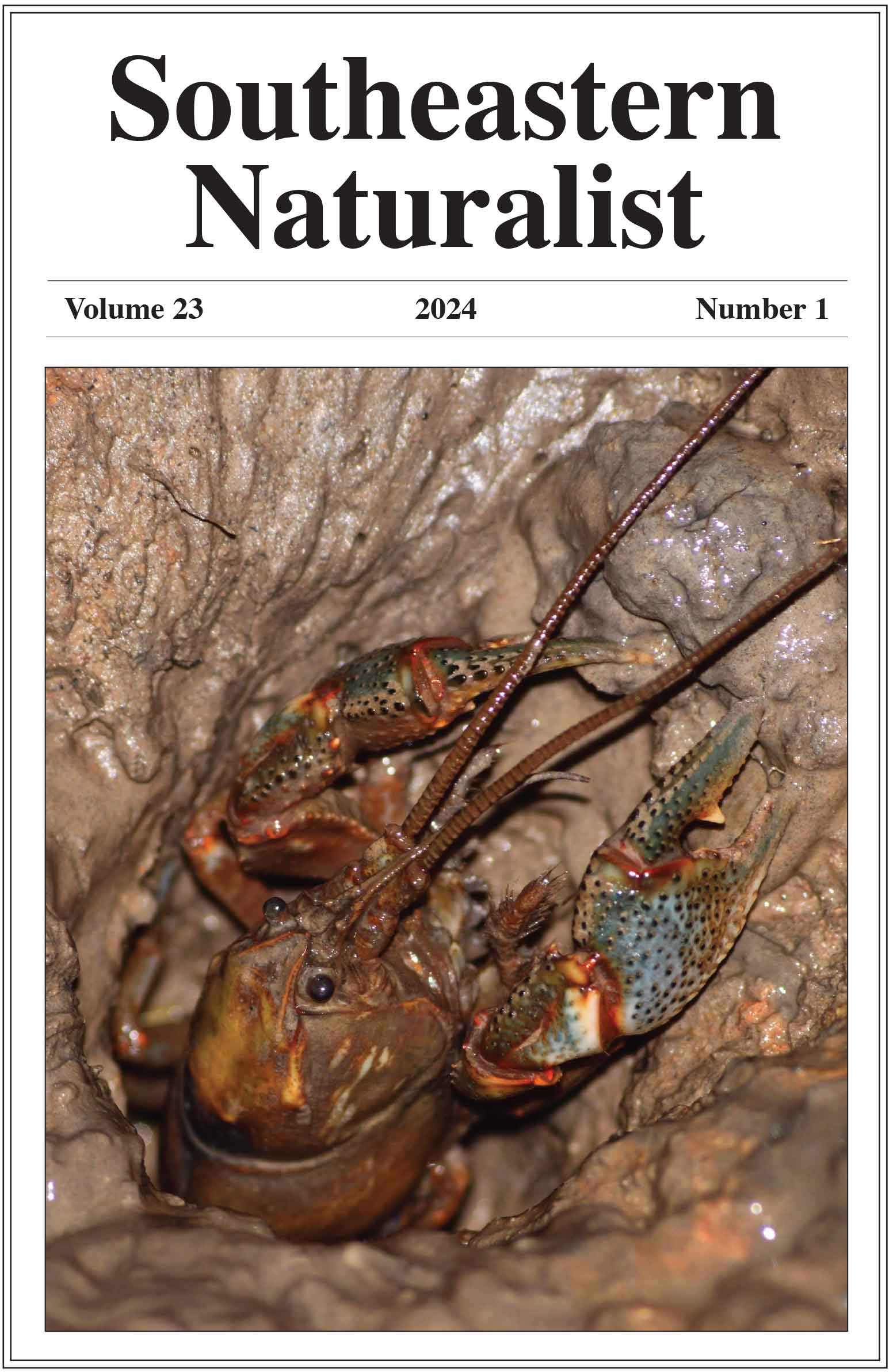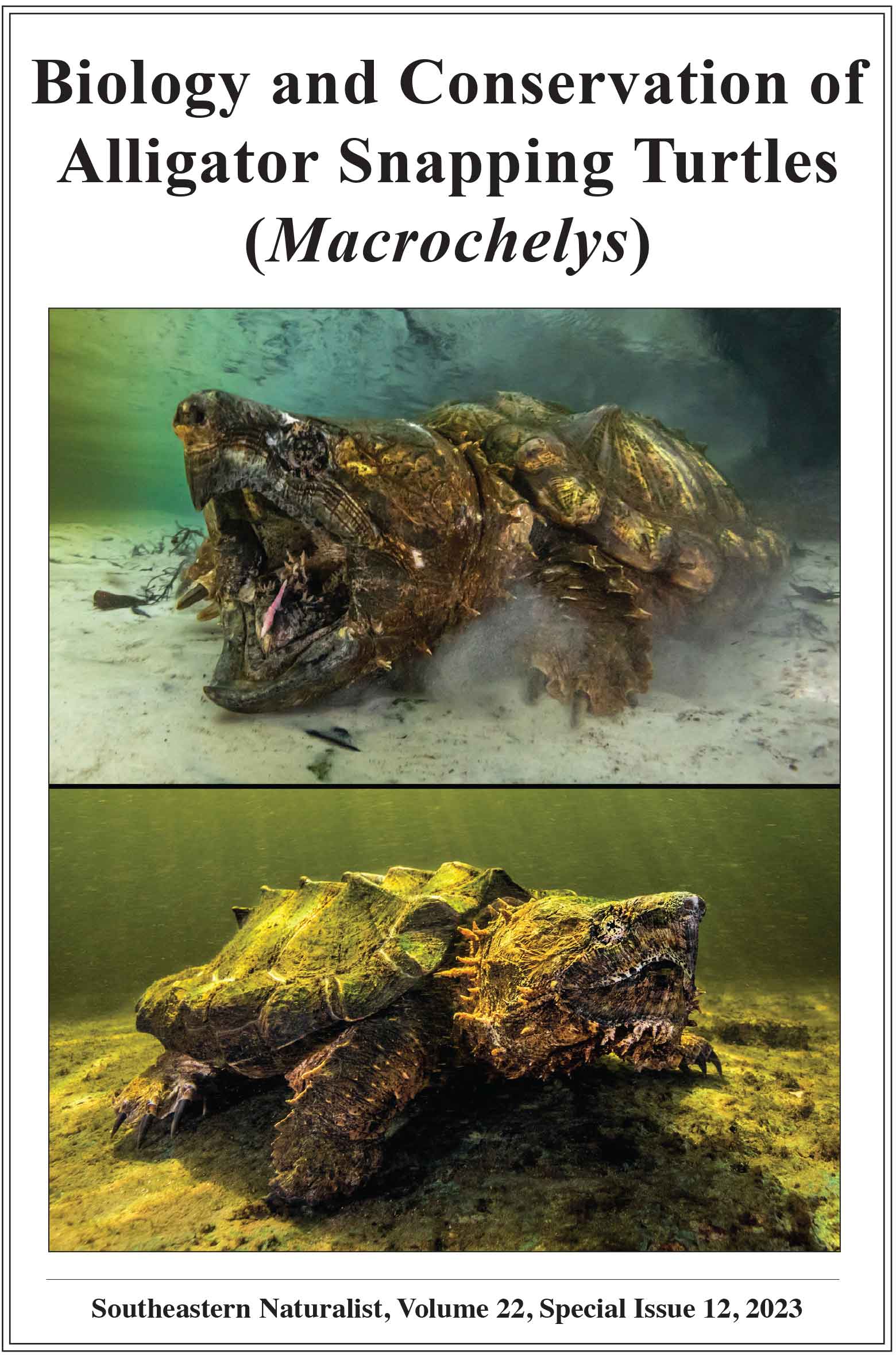First Record of a North American River Otter Using a Cave as a Natal Den
Lisa M. Smith1,*, Daniel Batie1, and Jeffery A. Gore2
1Florida Fish and Wildlife Conservation Commission, 1105 SW Williston Road, Gainesville, FL 32601. 2Florida Fish and Wildlife Conservation Commission, 3911 Hwy 2321 Panama City, FL 32409. *Corresponding author.
Southeastern Naturalist,Volume 20, Issue 2 (2021): N60–N64
Abstract
Lontra canadensis (North American River Otter; hereinafter “River Otter”) is a widespread, semi-aquatic mustelid. Despite considerable research and management of the species, there is limited information on the initiation of natal denning and characteristics of natal den habitat, especially in the southeastern United States. In February 2020, during a survey for bats in a cave in Jackson County, FL, we encountered a River Otter natal den containing 3 pups and an adult. The den was located in a small side chamber within the cave, 9.6 m from the nearest entrance and in an area with little available light. The nearest cave entrance was 492 m from the closest permanent body of water. We estimate that the pups were born in late January. Caves may make ideal natal dens because of reduced disturbance by predators, a stable temperature and humidity, and protection from harsh weather.
![]() Download Full-text pdf (Accessible only to subscribers. To subscribe click here.)
Download Full-text pdf (Accessible only to subscribers. To subscribe click here.)
Access Journal Content
Open access browsing of table of contents and abstract pages. Full text pdfs available for download for subscribers.
Issue-in-Progress: Vol. 23 (2) ... early view
Check out SENA's latest Special Issue:












 The Southeastern Naturalist is a peer-reviewed journal that covers all aspects of natural history within the southeastern United States. We welcome research articles, summary review papers, and observational notes.
The Southeastern Naturalist is a peer-reviewed journal that covers all aspects of natural history within the southeastern United States. We welcome research articles, summary review papers, and observational notes.